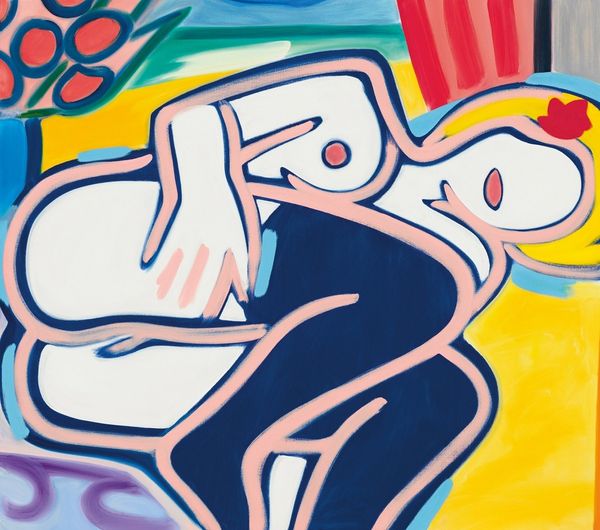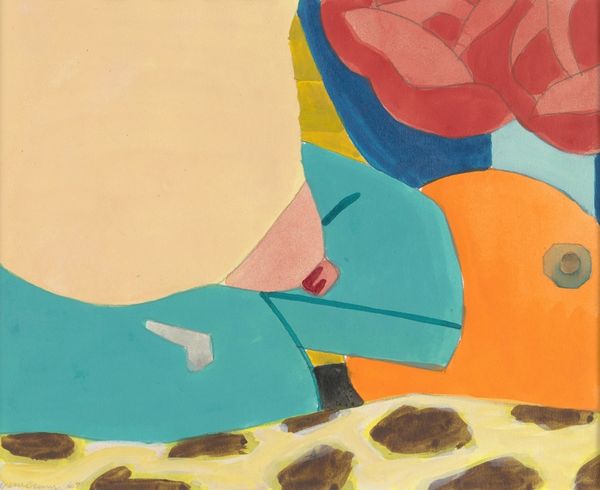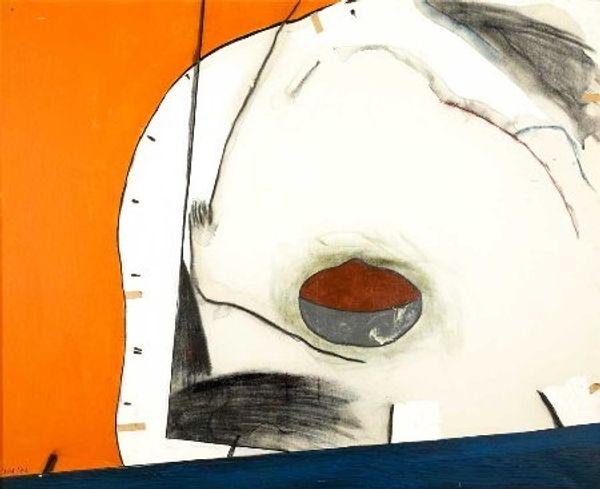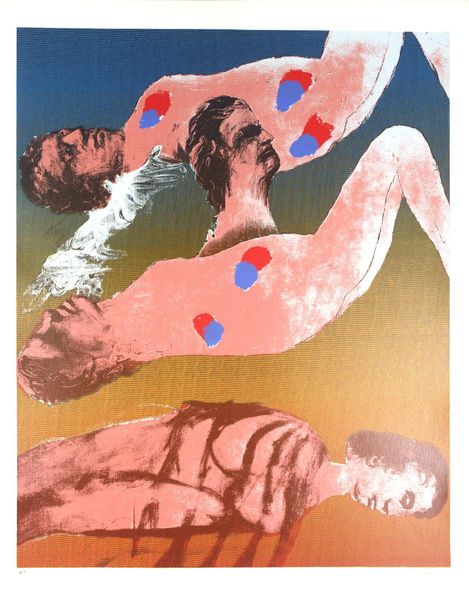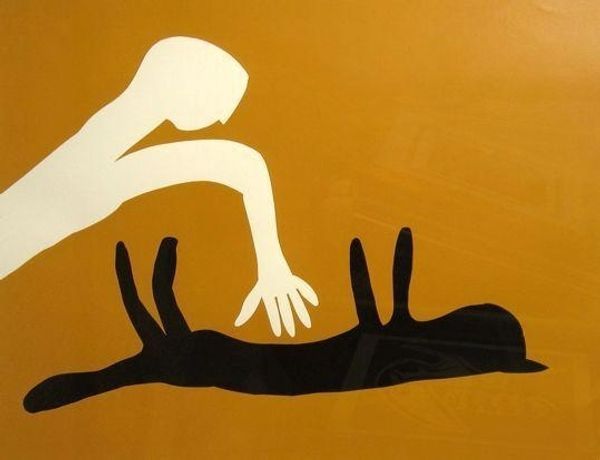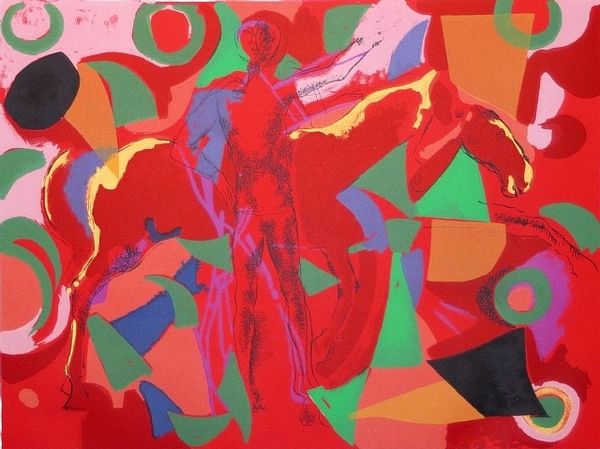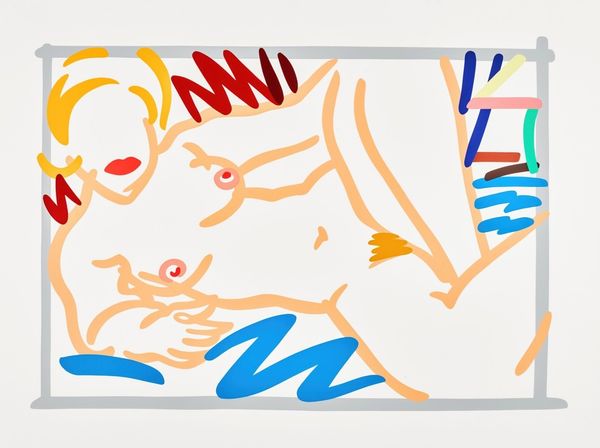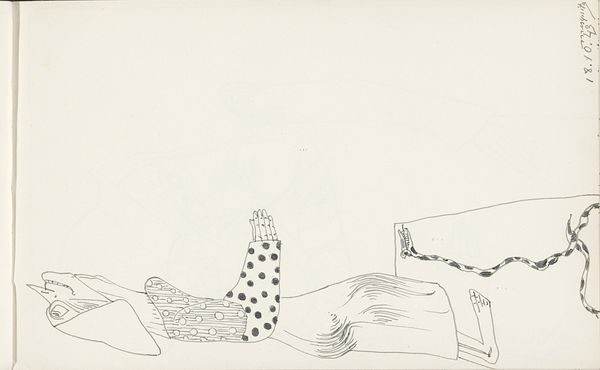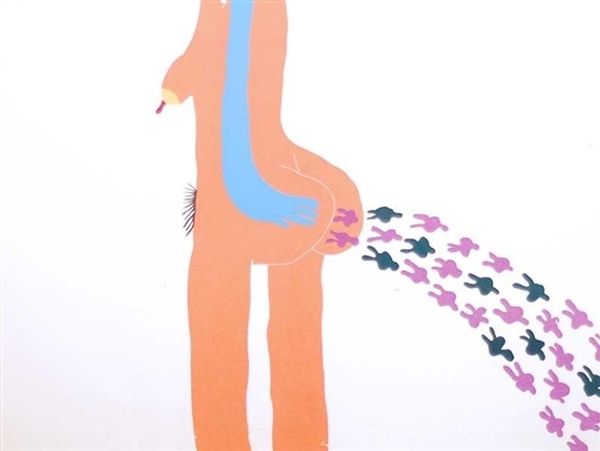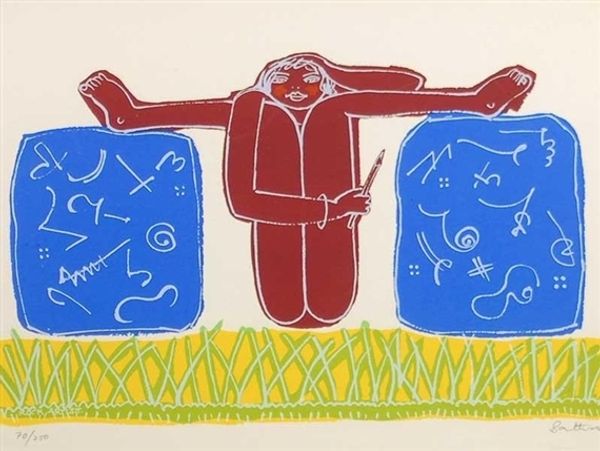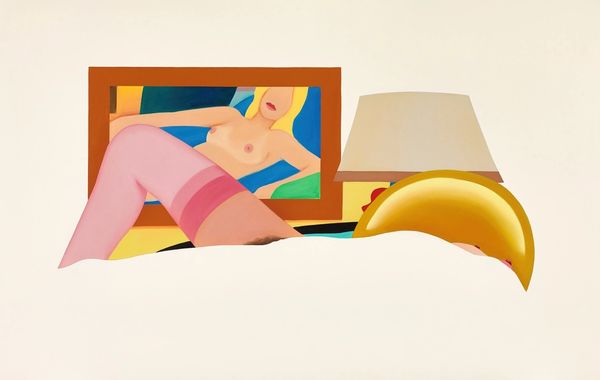
drawing, paper
#
pop art-esque
#
drawing
#
childish illustration
#
cartoon like
#
cartoon based
#
figuration
#
paper
#
text
#
bright colours popping
#
geometric
#
bubble style
#
abstraction
#
pop-art
#
line
#
cartoon style
#
cartoon carciture
#
cartoon theme
#
clip art
#
modernism
Copyright: Walter Battiss,Fair Use
Curator: Walter Battiss' "Horse and Butterfly" presents us with a striking and somewhat puzzling composition. The piece is executed as a drawing on paper, employing line and flat areas of color reminiscent of pop art. Editor: My immediate reaction is…whimsical? The bright colours and simplified forms create a childlike, almost naive atmosphere. The composition itself is quite odd, with these stylized figures seemingly floating on the page. Curator: It's interesting you say 'naive.' Battiss was deeply interested in San rock art and what he saw as a kind of primal creativity. He really sought to recapture that directness in his own work. He was particularly intrigued by how children and so called 'untaught artists' make their images. This he combined with a very sharp Pop aesthetic and commercial methods of reproduction. Editor: Absolutely, you can definitely see that blending of the raw and the refined. Considering the material aspects, the choice of drawing on paper as opposed to, say, a traditional canvas, pushes against notions of high art. This invites reflection on the labor involved and democratizes the artmaking process in a way. Curator: Indeed. And looking at Battiss’s practice through a historical lens, we can see him actively dismantling established artistic hierarchies. He was living and working in South Africa during the apartheid era. It's significant that he’s embracing visual languages outside the Western canon when the whole discourse was shaped by very strict hierarchies of civilization. How do these artistic choices become political acts in that context? Editor: That makes it even more compelling! Considering the cultural landscape of the time really enriches the understanding of this work. The cartoon-like presentation can easily make us discard any notion of its weight. But the fact that it questions dominant imagery is noteworthy, and that becomes an act of resistance by playing with visual codes. The artwork certainly challenges conventional modes of viewing. Curator: I agree, there's an element of disruption. Thank you for sharing your material insights, I think this illuminates Battiss’s creative philosophy so well. Editor: Likewise, it’s wonderful to think about this work in context and consider its defiance of those rigid categories so valued back then.
Comments
No comments
Be the first to comment and join the conversation on the ultimate creative platform.
